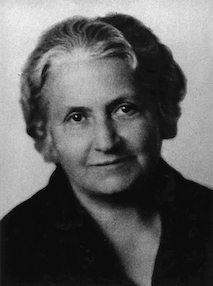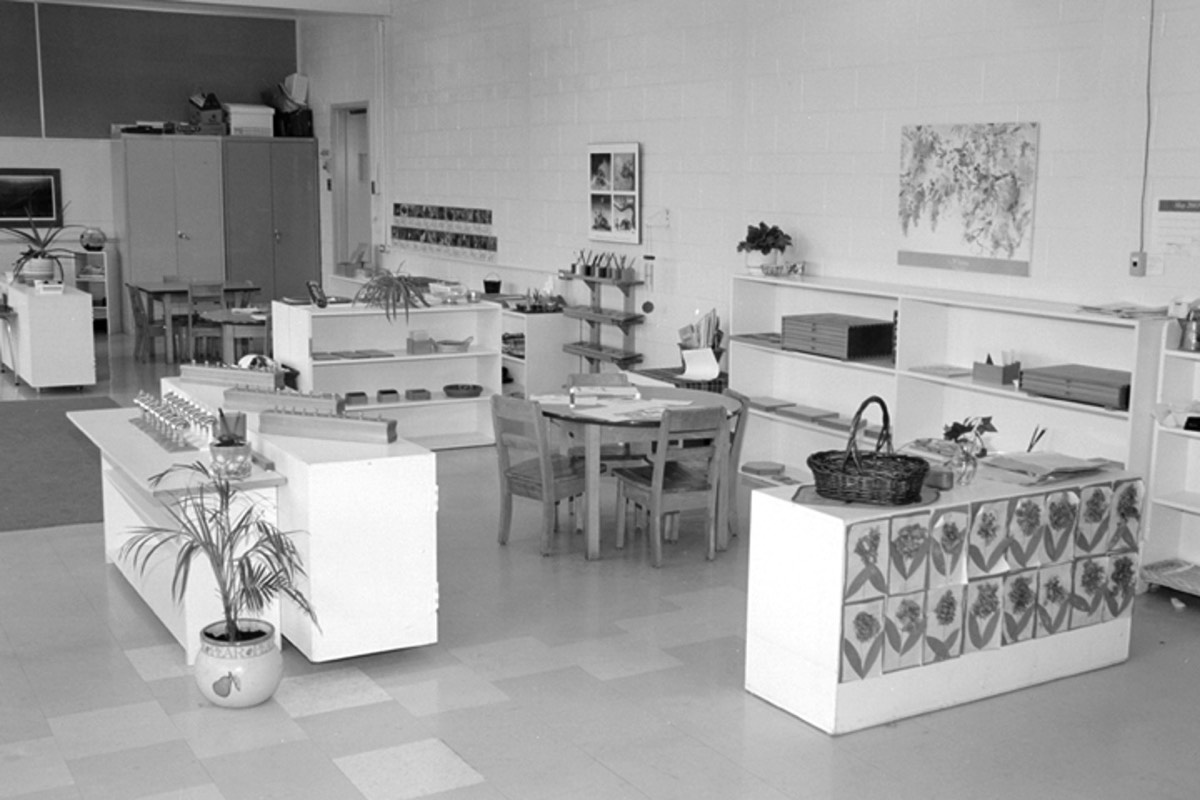Montessori (1949) posited the notion of the absorbent mind as a way of contrasting the young child’s relationship to the world with that of the older child and adult. Only with a mature faculty of mind, argued Montessori, does a person know the world through conscious reasoning and abstract conceptualization. Young children, on the other hand, are absorbed in the concrete reality of their world. From birth to age six, the child builds up her mind and senses through the absorption of the environment, first, at the level of the unconscious, and later, through the willful manipulation of concrete materials in a structured learning environment:
"What [the child] wants to do is to master his environment, finding therein the means for his development.... From the age of three till six, being able now to tackle his environment deliberately and consciously, he begins a period of real constructiveness.... His hand guided by his intelligence begins to do jobs ... that construct the basis of his mind.... It is as if the child, having absorbed the world by an unconscious kind of intelligence, now 'lays his hand' to it." (Montessori, 1949, p. 167)
Impressions from the world not only penetrate the young child’s mind, they also form it. The basic mental faculties that will support all subsequent learning are formed during this early sensitive period. Through instinctive (birth to age three) and willful (age three to six) interactions with the world, or more pointedly, actions on the world, the child develops a formative cosmology of the world and begins the long process of placing herself in relationship to it:
"There are two tendencies: one is the extension of consciousness by activities performed on the environment, the other is for the perfecting and enrichment of those powers already formed.... [At the age of three] the mind’s power to absorb tirelessly from the world is still there, but absorption is now helped and enriched by active experience. No longer is it a matter purely of the senses, but the hand also takes part.... [The child’s] intelligence no longer develops merely by existing; it needs a world of things which provide him with motives for his activity." (Montessori, 1949, pp. 167-8)
The most striking example of learning by absorption is that of language acquisition, the universal process by which children all around the world subconsciously and seemingly without effort pick up their native tongue. Children everywhere learn the subtleties of language, including its grammar, syntax, and semiotics, in direct and intimate relationship with the world. Montessori argued that many of the same learning principles that hold true for language acquisition also hold true for cognitive development in the early years of a child’s life.
First, cognitive learning is an individual exercise and cannot be taught. It is the young child’s self-regulated interactions with the world that spurs on cognitive development, not the explicit lessons given by a parent or teacher, nor a child’s social interactions with her peers. Second, young children delight in repetitive activity that subconsciously impresses and reinforces basic physical, spatial, and mental concepts on the mind. Throughout early childhood, independence and self-confidence are strengthened through the child’s achievements in these areas. Finally, all cognitive learning throughout this period occurs through the reciprocal interaction of environment, motor skills, and mind. In short, children learn by doing.
Montessori posited the notion of the prepared environment as a constructed and ordered learning space, set apart from that of older children and adults, where young children could go to further their learning through repetitive and individualized hands-on exercises that promote cognitive growth:
"The structured environment for learning involves the use of a wide range of didactic apparatus.... Children thrive on learning when they choose those materials which seem to fulfill a specific need in them. The focus of the Montessori curriculum is on mastery of one’s self and environment.... Repetition is necessary for the child to refine his senses, perfect his skills, and build up competency and knowledge.... The child revels in repeating those things which he knows best and does well." (Hainstock, 1986, p. 68)




